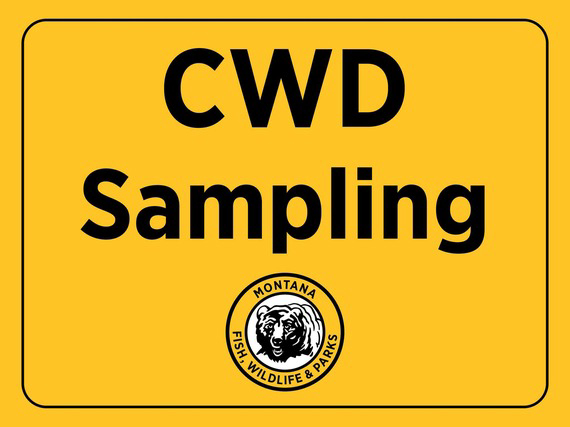
|
Free, fast and convenient sampling for chronic wasting disease (CWD) is available by appointment during archery season at Montana Fish, Wildlife & Parks headquarters in Miles City. Hunters can call CWD regional coordinators at 406-234-0496 for sampling appointments during weekday business hours.
Southeast Montana is a Priority Surveillance Area in 2025 for collecting samples from deer, elk or moose. Hunters are encouraged to voluntarily submit their animal for sampling to help gather additional data for that area. This information is used to help inform the best management strategies for the affected hunting districts.
CWD is a fatal disease that infects members of the deer family, including elk, moose, mule deer and white-tailed deer. It spreads between animals through bodily fluids and can remain in the environment for a long time. There is no vaccine or cure for CWD. Symptoms typically take 16 to 24 months to develop, but animals may test positive as early as three to six months into the infection. Therefore, most hunter-harvested animals that test positive do not exhibit obvious symptoms or characteristics of the disease when harvested.
The prevalence and distribution of CWD is growing in Montana, and several areas have implemented special management, while other areas lack sufficient sampling data to gauge the impact. CWD is an ongoing problem that over time could lead to serious population declines in herds. Other states have seen deer population declines correlated with CWD prevalences above 20 to 40 percent. In Wyoming, some heavily infected herds of mule deer declined 21 percent per year, and white-tailed deer declined 10 percent per year. Colorado saw a 45 percent decline in mule deer in CWD-positive areas over 20 years.
FWP relies on the public for testing and prevention efforts including proper carcass disposal and reporting of sick animals.
For best sampling results of heads, leave two to four inches of the animal’s neck below the low jawbone and base of the skull to ensure retropharyngeal lymph nodes are present. Heads cannot be frozen or must be thawed first to be sampled. The harvest location is required for testing but will be used only for data collection. The animal must have been harvested in Montana for testing.
Test results are generally available in two weeks or less. If an animal tests positive for CWD, the Centers for Disease Control recommends that people do not eat the meat. FWP authorizes disposal of the meat in a landfill. If you choose not to consume the meat and wish to request a new license for this year or next year, call your FWP regional office or the Licensing Call Center (406-444-2950) to coordinate the next steps. You will have to properly dispose of all remaining parts in a landfill, and turn in any antlers associated with your harvest, if you request a replacement license
Hunters also may submit their own samples for testing and have FWP pay for it. For instructions, submission forms and videos, visit FWP’s website at https://fwp.mt.gov/conservation/chronic-wasting-disease/get-your-animal-sampled.
To help prevent the spread of CWD, carcass parts, such as brain, eyes, spleen, lymph nodes, and spinal cord material, should be left at the kill site when possible. If the animal is transported for taxidermy or meat processing, the brain and spinal tissue must be bagged and disposed of in a Class II landfill. A carcass may be transported within the state regardless of where it was harvested if the carcass parts are disposed of in a landfill after butchering and processing. Dumping carcasses is illegal, unethical, and can spread diseases, including CWD.
For more information on CWD management in Montana, visit https://fwp.mt.gov/CWD.